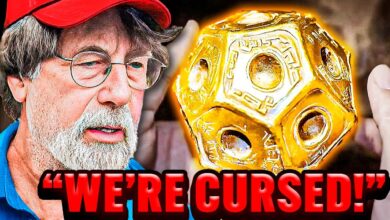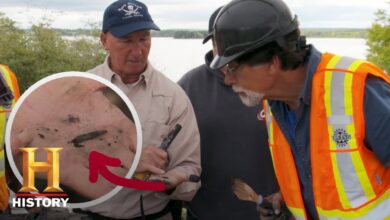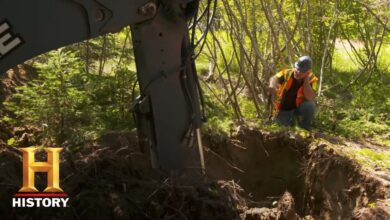The Curse of Oak Island: BIG DISCOVERY IN THE SWAMP (Part 2) (Season 7) | History
The Curse of Oak Island: BIG DISCOVERY IN THE SWAMP (Part 2) (Season 7) | History

Rick Lagina gathers with members of the team in the war room to hear a highly anticipated report on the possible silver ring found one day ago in the swamp.
“Doug, if you’d be kind enough to bring him up and say hello to the gentlemen, and hopefully get some really relevant information. Hello, professor, how are you?”
Joining them via videoconference is Charles Lewton-Brain, a professor at the Alberta College of Art and Design, who has more than 30 years of experience as a professional gemologist and master goldsmith. Having examined detailed photographs taken of the ring, Lewton-Brain has been able to determine not only when the object was made, but also its possible origins.
“Good, when he gets here, America top pocket, I found thousands of rings—gold, silver, bronze, copper—and this ring’s got me stumped. So I’m open, you’ve got some good news for us. I’m open, this is kind of old.”
“Well, definitely kind of old. I think we could start with that. The repair is crude, and because of the way it was done, it looks like somebody needed it done pretty quickly. And I think there are two repairs: one to make the ring a lot bigger, and a second repair to make the ring a little smaller. It does look like there was a better metal used for the repair, like silver or platinum. It’s a good ring, but on the top part of that joint, it is still bright silver, and the ring itself has corroded away, thinned out from that patch of metal. So that could mean bronze, or it could mean a higher copper content silver alloy.”
“Where did this floral pattern… I mean, is there any cultural influence to it?”
“The floral design definitely appears handmade. The flower in the center is rather interesting because it appears to have been chiseled. That is, cut out using chisels, which implies older in time because saw blades don’t really become available to jewelers until the 1730s or 1750s. And prior to that, you would be cutting the metal out with a chisel.”
“So did I hear you correctly that it would be pre-1730?”
“It is, Reed. You’re into me.”
“I see. Possibly Spanish. A Spanish silver ring dating back to the early 1700s or earlier. Could it be in some way connected to the Spanish Marrapodi coin dated to 1652 that Rick, Marty, and the team found six years ago in the swamp?”
“Yeah, now that you’ve pointed it out, I know that flower designs were really popular on a lot of the Spanish jewelry found from the treasure fleets around the world, actually.”
“Well, you know, whenever we find things, we’re always looking to come to a greater understanding of possibly the who of it, but certainly when. And that timeline is instrumental in figuring out the who, what, when, where, why, and how of Oak Island, that’s for sure. So we thank you for your help. It’s been insightful.”
“Thank you, I thank you. Just, I’m open to some more there, so let’s go.”








